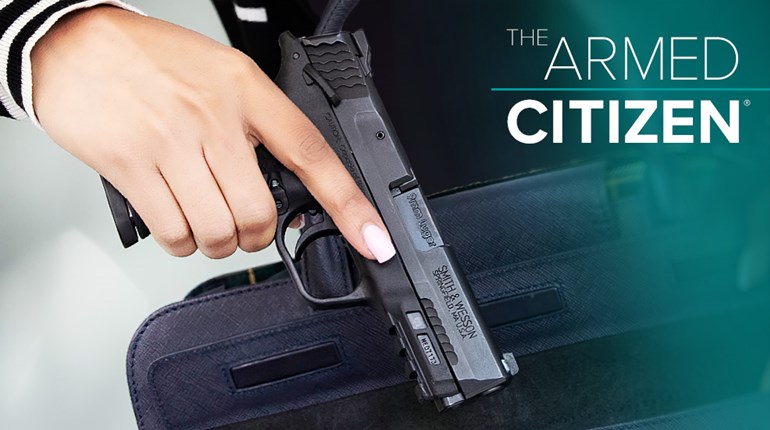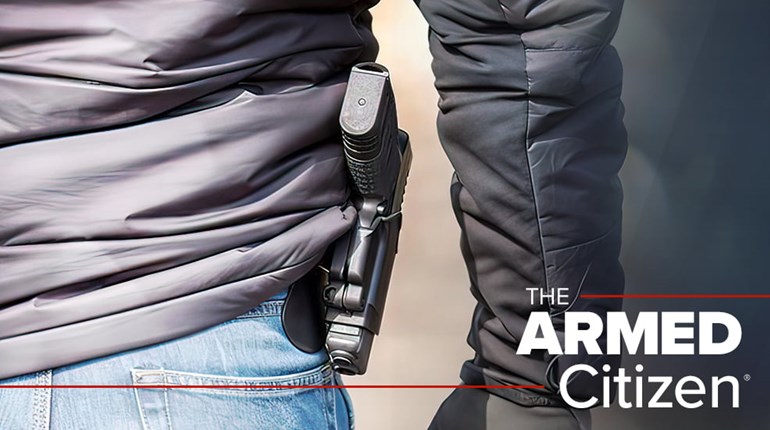
This feature appears in the April ‘17 issue of NRA America’s 1st Freedom, one of the official journals of the National Rifle Association.
Discussion of so-called gun-free zones doesn’t make it onto the news much these days, so the truth can be hard to find. The reason why is simple: After high-profile shootings, the “mainstream” media tend to ignore the facts and follow their gun-ban agenda into emotional discussions of gun bans, magazine bans and background checks.
Researcher John Lott, author of the new book, The War on Guns, and head of the Crime Prevention Research Center, has done more research on the relationship between mass public shootings and gun-free zones than anyone else in the country. We recently posed some questions to Lott in order to gain a better understanding of the issue.
America’s 1st Freedom: What is the most important thing you think people need to know about so-called gun-free zones? What has your research shown?
John Lott: Criminals try to pick the easiest places for them to commit crimes. They want to kill as many people as possible. Killers consistently pick defenseless targets where they know no one will have a gun.
Since at least 1950, all but four public mass shootings in America have taken place where general citizens can’t carry guns for protection. In Europe, every mass public shooting has occurred in a gun-free zone. And Europe is no stranger to mass public shootings. It has been host to three of the four worst K-12 school shootings and, in the past eight years, a per-capita casualty rate 50 percent higher than the United States.
With dozens of recent cases in which permit holders stopped what clearly would have become mass public shootings, killers unsurprisingly try to avoid resistance.
Earlier this year, a young Islamic State sympathizer planned a shooting at one of the largest churches in Detroit. In a wiretap, the FBI recorded why he picked the church: “It’s easy, and a lot of people go there. Plus, people are not allowed to carry guns in church. Plus, it would make the news.” With dozens of recent cases in which permit holders stopped what clearly would have become mass public shootings, killers unsurprisingly try to avoid resistance.
For similar examples of killers explicitly picking targets where they didn’t have to worry about security or civilians with guns, just look at the 2015 Charleston, S.C., church shooting; the 2012 theater shooting in Aurora, Colo.; and the 2015 attack in San Bernardino, Calif. Nor are the examples limited to the United States. For example, in 2014 the mass public shooter in Moncton, New Brunswick, in Canada had comics on his Facebook page making fun of gun-free zones.
In late 2013, Interpol Secretary General Ron Noble warned that even with “extraordinary security,” it was virtually impossible to keep weapons out of soft targets, and that means that only the terrorists will have weapons. That is exactly what my research has shown.
A1F: Isn’t the United States unique in terms of mass public shootings?
Lott: Even after the attacks last November that left 130 dead in Paris, President Barack Obama had the gall to claim, “We are the only advanced country on Earth that sees this kind of mass violence erupt with this kind of frequency.” But using the traditional FBI definition, the EU and the U.S. each experienced 25 mass shootings during the first seven years of Obama’s presidency (January 2009 to December 2015). Killing people at virtually the same rate: 0.083 per million people in the EU versus 0.089 per million people in the U.S. But the injury rate in the EU was more than twice as high: 0.19 versus 0.087.
Compared to the rest of the world, moreover, the U.S. and Europe are quite safe from mass public shootings. In Russia and elsewhere, struggles over sovereignty have led to a lot of devastating attacks. For instance, the 2004 Beslan school siege—carried out in the name of Chechen independence—claimed 385 lives.
Even if we exclude such killings, we still find that the U.S. is relatively safe. Of the 25 worst mass public shootings from January 1970 through June 2016, only one occurred here—the attack at the Pulse nightclub in Orlando, Fla., which left 49 people dead. Ten occurred in Nigeria, including a 2014 Boko Haram strike killing 300 people. For those interested, my book, The War on Guns, has a list of cases and sources so that people can check for themselves and verify all these attacks in other countries.
A1F: Why is this so hard to understand for some?
Lott: Time after time, mass public shootings keep on occurring where general citizens can’t have guns for protection, but the media virtually never report this in their news coverage, despite this being the easiest fact to quickly confirm after these attacks occur. Instead, the media quickly rushes in with stories when an “assault rifle” is used or how the killers got their guns, even when these initial reports often turn out wrong.
My guess is that the entire debate about gun control would be dramatically different if, even once in a while, the media would report that there has been yet another mass public shooting at a gun-free zone.
The media also tend to only report bad things that happen with guns. Even mass public shootings that have been stopped by concealed-handgun permit holders don’t get much local news coverage. Here are some recent cases that got no national news coverage, but which I covered in my book.
Lyman, S.C., June 30, 2016: 32-year-old Jody Ray Thompson started shooting at others in a nightclub. The shooter had shot three people and nearly shot a fourth person when a permit holder shot back, wounding Thompson. According to Fox 5 in Atlanta: “At least one South Carolina sheriff [is] crediting a man with a concealed-carry permit with preventing further violence at a nightclub.”
Conyers, Ga., May 31, 2015: A permit holder returned fire after a shooter killed two people at a convenience store. The attacker retreated from the store. Rockdale County Sheriff Eric Levett said of the incident: “I believe that if Mr. Scott did not return fire at the suspect, then more of those customers would have [been] hit by a gun[shot]. ... So, in my opinion, he saved other lives in that store.”
New Holland, S.C., May 5, 2015: A man, firing his gun, approached a volunteer fire department parking lot “full of children and firefighters.” Two permit holders stopped the attacker. A local TV station, Fox Carolina, carried the headline: “CWPS likely stopped deaths of children, firefighters.”
Chicago, April 17, 2015: An Uber driver had just dropped off a passenger when he saw gunman Everardo Custodio open fire on a crowd of people. The driver, who had a permit, shot and wounded the gunman. Assistant State’s Attorney Barry Quinn praised the driver for “acting in self-defense and in the defense of others.”
Philadelphia, March 2015: A permit holder was walking by a barbershop when he heard shots fired. He quickly ran into the shop and shot the gunman to death. “I guess he saved a lot of people in there,” said police Capt. Frank Llewellyn.
If Americans hear only about the bad things that happen with guns, they will be much more likely to support strict gun regulations. People see that bad things happen with guns, and they think that if they only get rid of guns, bad things won’t happen.
Unfortunately, the lopsided media coverage is often used to prevent people from being able to defend themselves, and thus endangers people’s lives.
A1F: Why do you think media ignore the truth and push a narrative that gun-free zones are safe zones? Time after time, mass public shootings keep on occurring where general citizens can’t have guns for protection, but the media virtually never report this in their news coverage ...
Lott: It is largely for the same reasons that the media is so biased against guns. That includes everything from reporters not knowing very much about guns to them generally being liberal Democrats. Part of it is that they are as affected by the same lopsided news coverage as others are. Polls indicate that conservatives and liberals most disagree on the issue of gun control, so it isn’t too surprising that the media—a profession that is relatively dominated by liberals—don’t view guns very favorably.
A1F: Do you think anti-gun groups and gun-ban advocates are simply misunderstanding the truth, or intentionally twisting the facts for their purposes?
Lott: It depends on whom you are talking about. In The War on Guns, I show the tremendous number of false claims made by Michael Bloomberg’s groups and public health research. It is one thing to make some mistakes, but the mistakes that they make consistently work in the same direction to support their push for gun control. Bloomberg appears willing to do anything to accomplish his goals. The most disappointing thing is that the media don’t hold his group accountable for these biases.
A1F: What is happening around the country to battle the danger of gun-free zones?
Lott: The biggest debate right now is over campus carry. At least 11 states currently mandate that public universities allow permitted concealed handguns on their property. Another 24 states leave it up to individual universities to decide, though liberal academics rarely allow it when they have a choice. At least six states are seriously considering this reform this year: Arkansas, Florida, Georgia, Indiana, South Carolina and Wyoming.
Bloomberg is spending a large amount of money battling campus carry with both “research” and politics. In Nevada, I saw Bloomberg has targeted legislators who have sponsored campus carry with bizarre television ads claiming that they want to let criminals carry guns on college campuses. He has rented buses to bring college students to state capitals, and paid them to pass out flyers and lobby legislators.
The research has been particularly weak. For example, they focus on the claim that young people have many problems, but they ignore the existing research showing that both young and older permit holders are extremely law-abiding, losing their permits for firearm violations at just thousandths or tens of thousandths of one percentage point. While police very rarely get convicted of misdemeanors or felonies, permit holders get convicted at a rate of just one-tenth the rate of officers.
Gun control advocates desperately fight against campus carry as their credibility is on the line. They have been predicting complete disaster if concealed carry is allowed on campuses. But time after time, when campus carry rules are adopted, it very quickly becomes clear that none of the claimed disasters occur. Gun control advocates risk completely losing the support of young influential voters.
For more important information dealing with gun control and the Second Amendment, check out John Lott’s newest book, The War On Guns: Arming Yourself Against Gun Control Lies. You can order The War On Guns at Amazon.com or Barnesandnoble.com.

































